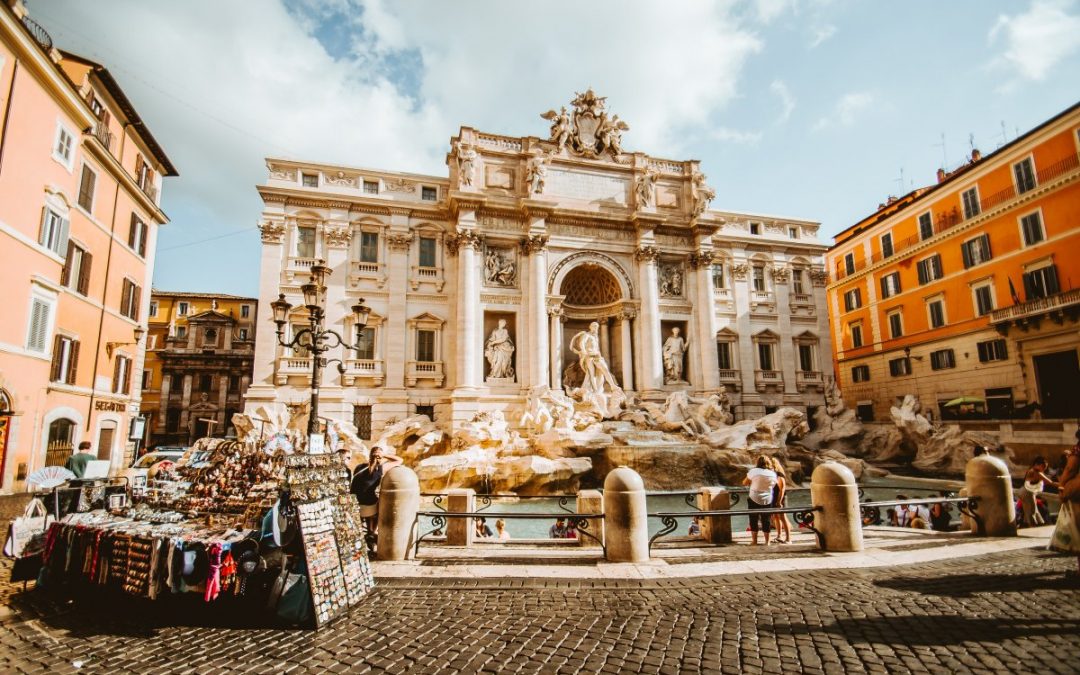Going into business is full of challenges. Figuring out what business you want to go into is usually pretty close to the top of the list. So you do your research, figure out what you want to do, and get pumped up about what business dream. Then you start looking at the landscape and see that lots of other people are doing the same thing. There’s a classic example of a “sock of the month club”. It sounds unique and innovative, but if you start searching the web you will find at least a dozen different companies offering this service. It’s sort of like selling pizza in Rome.
Most people throw in the towel before they ever get started and go back to the drawing board. The reality is that most times, if someone isn’t doing it, there’s probably a reason. Why do Lowes and Home Depot often set up shop across the streets from one another? Because that’s where the customers are. Multiply that scenario times 10 and you have the pizza landscape in Rome.
Pizza per Square Mile
How many pizza places are in your town? My town is fairly large and rural and covers about 100 square miles. We have 5 pizza places. We also have about 10 other restaurants which is probably a fairly normal distribution for many areas of the United States. Imagine what it would be like if all of those restaurants were pizza places? It sounds absurd, for a variety of reasons:
- People want variety
- There’s a fixed number of people who like pizza
- a flooded market will drive down prices
- Scarcity fuels sales
- Uniqueness allows you to stand out and attract customers from a larger area
I don’t know that these are hard and fast rules, but they are perceptions that generally turn out to be true. They are also not good reasons for choosing a business direction. Rome, and Italy in general, tends to break all these rules. Try selling pizza in Rome. With few exceptions, all restaurants sell pizza. You can usually see at least one other pizza parlor while you are at another. Some squares will have 4 or more within a couple hundred feet. It doesn’t seem to make sense until you look at it a little closer, and then you realize there differentiators that keep all these businesses alive.
4 Flavors of Pizza
Take out pizza
This is totally segregated in Italy. You wouldn’t go to a pizza restaurant and do take out like we do in the states. If you are going to do take out, it is just a slice (or two) and it’s a walkup that you pick your slice. No ordering, no waiting. In and out, and there’s usually sandwiches as well. There might be a couple tables, but this is Italy’s version of fast food. They tend to be more evenly spaced and catered to tourists and business people on the go. They actually don’t compete against the “restaurants” that are often located right next to them. It’s on par with a McDonalds being next to a fine dining restaurant. They are targeting different customers so they barely notice one another.
Corner pizza
For lack of a better term, are the restaurants usually on corners or at intersection points. They have outside tables and a menu that is roughly 36×30 and strangely, it’s almost identical to every other pizza place like this. Menu items are the same and prices are about the same. There is some slight variation, but these are the mass market pizza experience mostly for tourists, but also for business people who might work nearby.
Main street pizza
These are the restaurants that are in a prominent location, but not necessarily at an intersection. If you don’t know about it, you are probably likely to go by without stopping. Word of mouth has spread and there tends to be a higher number of locals than tourists. People come for the food as well as the atmosphere. They tend to have a white magazine style menu rather than the poster-board out front.
I personally found these restaurant more unique and memorable. I would look for them the next time I’m in Italy, unlike the corner pizza restaurants which I would stop into based on where I was if I was hungry. Prices weren’t much different than the corner pizza. The reason is the corner pizza restaurants are paying for location, and main street pizza restaurants are investing in a reputation for good food and ambiance.
Destination pizza
These were the restaurants that you had to want to go to. Our apartment in Rome happened to be down the block from one these. They tended to be smaller, and in places that are difficult to find unless you are a local. The items on the menu are pretty much the same as the others, but entres were at least $10-20 euros more than the other restaurants. The menus were also shorter. That’s because most people were there for whatever the chef was making that night.
There were a few standards, but people went there for the experience that the chef created. There was a barrier to entry both financially and geographically. Those who walk by and wonder what this place is, don’t know what they are missing. And people who eat there will tell their friends the same thing. There might be a table empty, but it’s probably being held for someone. Call for a reservation. They may be able to get you in sometime next month.
What’s your niche?
So if you’ve entered a crowded market like selling pizza in Rome, chances are there’s still room for one or two more. The key is figuring out how you are going to position yourself in that market. Are you going to differentiate yourself by location, convenience, speed, customer service, or an outstanding experience. We can’t be all things to all people, so don’t waste your time and money. McDonalds for instance is known for consistency, not necessarily quality. What are you going to be known for?



